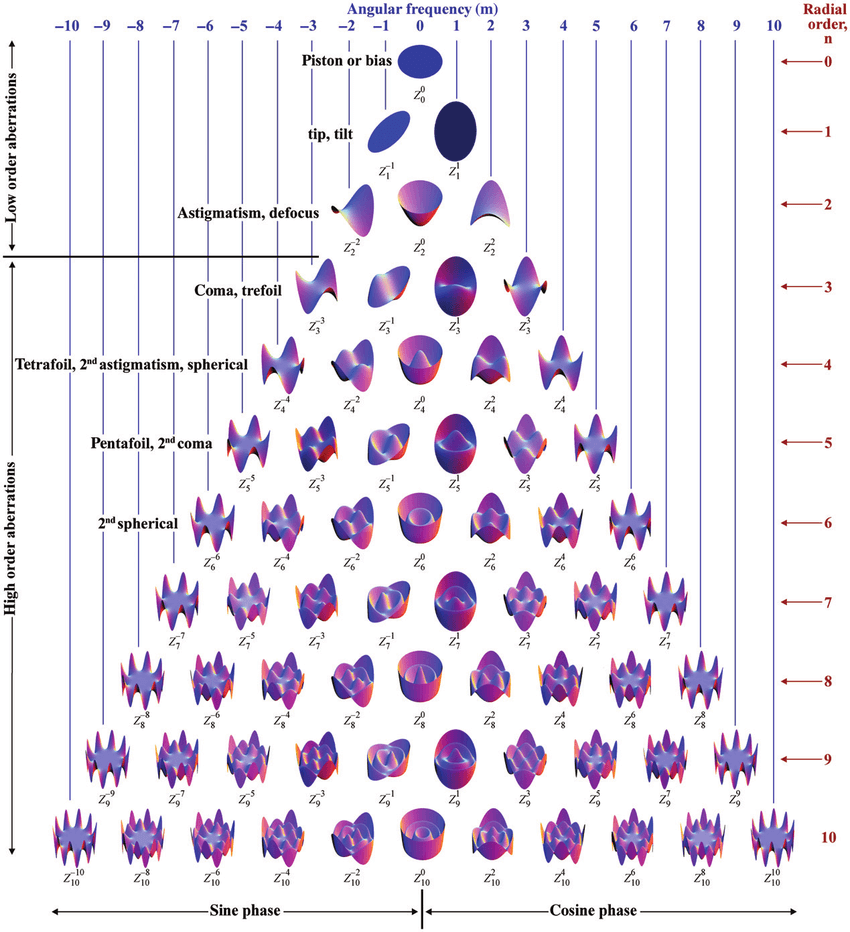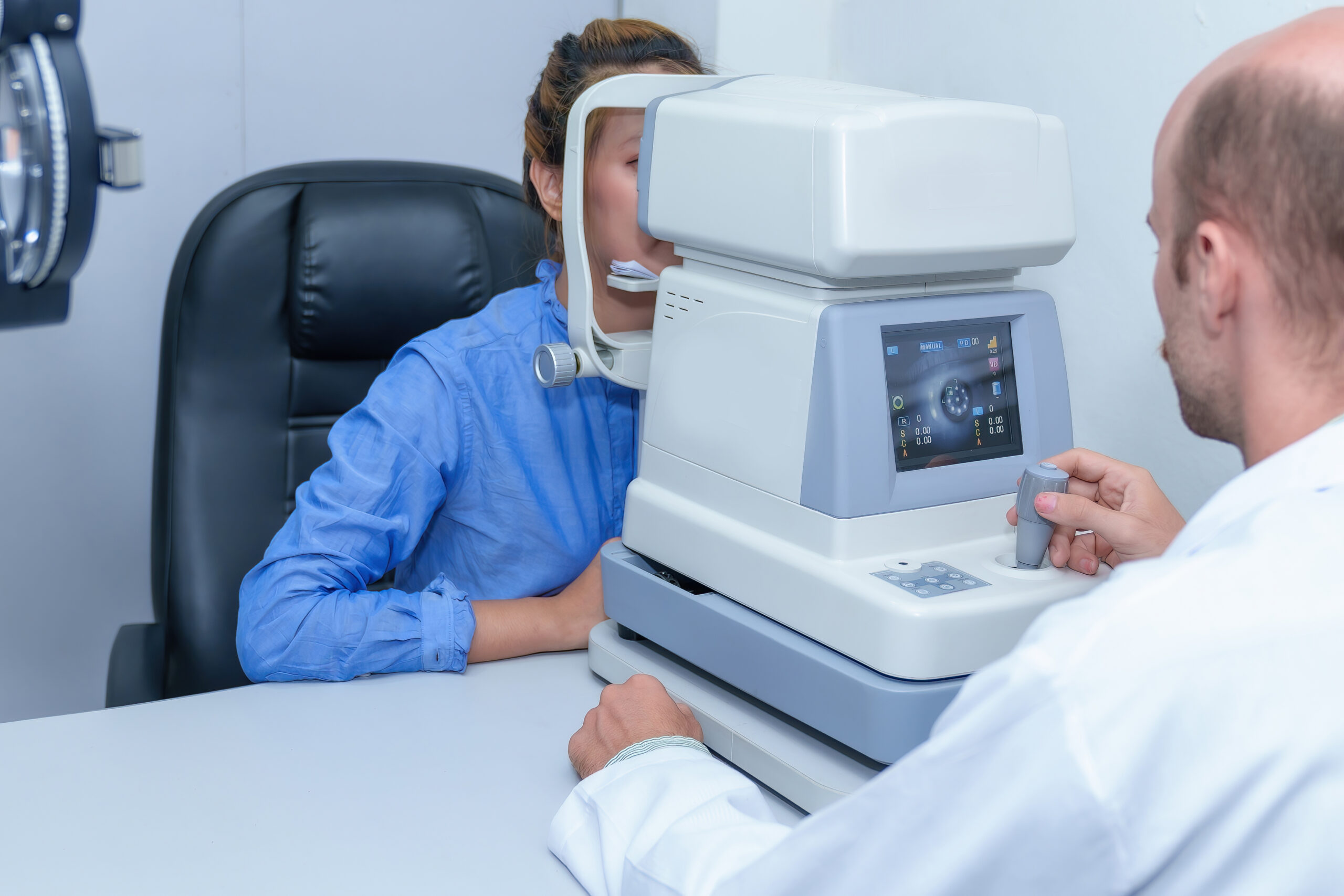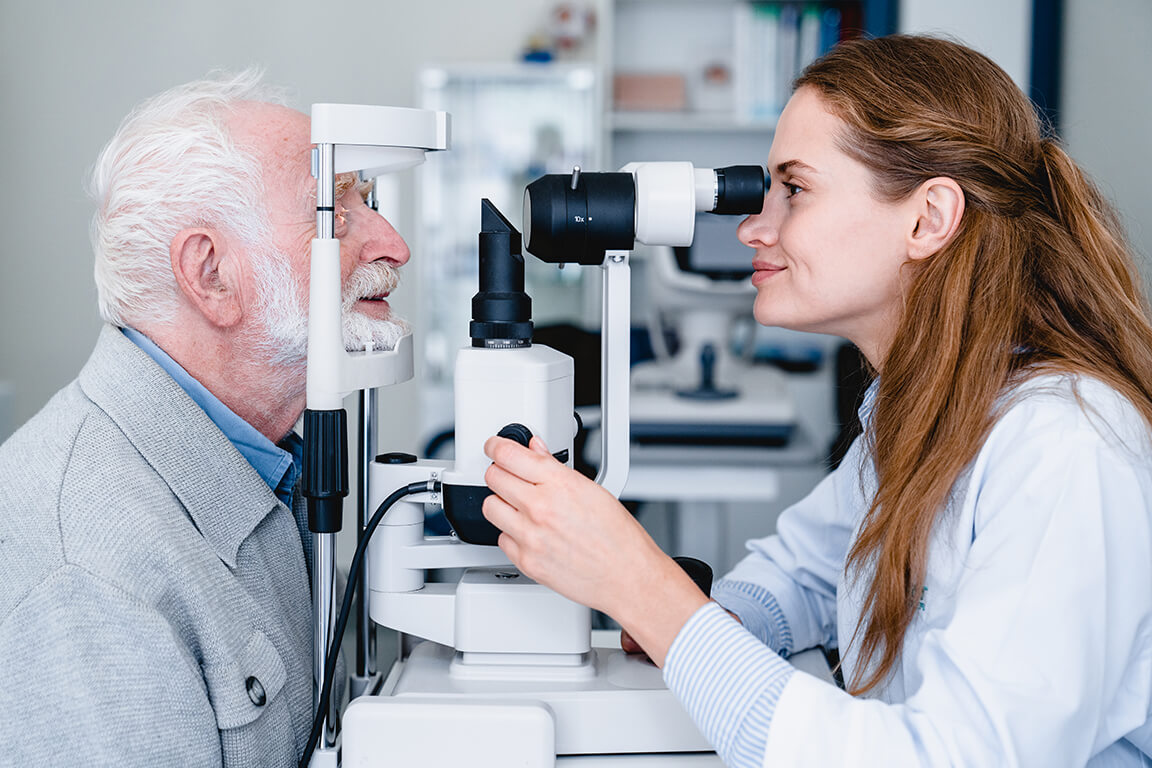Thinking about higher order aberrations when prescribing glasses for a patient is probably not foremost on the mind of the common optometrist. However, with the advancements in technology in detecting and measuring higher order aberrations as well as the availability of high-definition spectacle lenses, factoring in higher order aberrations may not be so far out of reach of the common optometrist after all.
A Refresher on Higher Order Aberrations
If optics lectures were a long time ago for you, here’s a refresher on what higher order aberrations actually are.
Higher order aberrations (HOA) are a complex form of refractive error. Where lower order aberrations are more familiar in clinical practice – myopia, hyperopia, and regular astigmatism – HOA are also optical defects that are detrimental to image quality but can be more subtle to detect.1, 2 Lower order aberrations are responsible for about 85% of an eye’s aberration, while HOA make up the remaining 15%.2
HOA arise from irregularities in the refractive components of the eye, including the tear film, cornea, aqueous humor, lens, and vitreous.2 This distortion of the wavefront of light as it passes through the optical media of the eye can be influenced by factors such as pupil diameter and accommodation and even age.1 Corneal scarring, cataracts, and an uneven tear film from dry eye disease can all contribute to higher order aberrations.2
The wavefront of light describes the movement of photos in a wave-like fashion, emanating outward from an object point like the ripples induced by dropping a stone into a body of water. The further this wavefront ripples away from the original object point, it becomes progressively flatter. Eventually, it appears entirely flat, a point considered “optical infinity”.3
An aberration to the wavefront basically refers to a refracted light ray that’s gone off course from its intended focal point. When it comes to the optical system of the eye, the ideal scenario is that the wavefronts of light propagating from the object and passing through the refractive components of the eye should come to a single point of focus on the retina. However, imperfections of the human eye mean that these wavefronts end up becoming distorted, whether too steep, flat, or irregular.3
Where traditional spectacle lens prescriptions sit around the lower order aberrations of oblique astigmatism, defocus, and with- or against-the-rule astigmatism, HOA include:3
- Oblique trefoil
- Vertical coma
- Horizontal coma
- With- and against-the-rule trefoil
- Oblique quatrefoil
- Oblique secondary astigmatism
- Spherical aberration
- With- and against-the-rule secondary astigmatism
- Normal quatrefoil
See diagram below from the Journal of Modern Optics 4th April 2011

The Effects of Uncorrected Higher Order Aberrations
You may be familiar with the patient who easily achieves 6/6 visual acuity, if not 6/4.8, with their newly prescribed glasses, yet still complains about dissatisfaction with the quality of their vision. Though there may be other explanations, these may be patients experiencing the effects of uncorrected HOA.
HOA are associated with visual symptoms such as:2
- Difficulties with night vision
- Glare
- Haloes
- Blur
- Starburst patterns
- Diplopia
- Ghosting
- Poor contrast vision
The impact of HOA on vision quality can depend on a number of factors. Patients with larger pupil diameters tend to be more symptomatic due to the larger aperture.1, 2 This effect is often more pronounced in scotopic conditions when the pupil naturally dilates.2 As the shape and position of the crystalline lens changes with accommodation, accommodative responses can also influence HOA and subsequent retinal image quality.1
Interestingly, there has been a suggestion about the role of wavefront aberrations and HOA in the development and progression of myopia. At this point in time, studies are still inconclusive about how this may influence clinical practices in myopia control.1
All eyes will have some degree of HOA, though they may not necessarily be visually significant to your patient. In these cases, it’s not critical to account for HOA in your prescription.2 In other cases, where your patient is still reporting an unexpected difficulty with driving at night time despite their “perfect vision”, it could be worth investigating – and factoring in – their higher order aberrations.
Prescribing High-Definition Lenses
Diagnosing HOA is performed with aberrometry, a type of test armed with wavefront technology. Combined with the availability of various forms of adaptive optics including, Point Spread Function, Strehl Ratio, and Contrast Sensitivity , optometrists and dispensers have the opportunity to prescribe high-definition spectacle lenses to correct HOA and provide visual acuity sharper than can be achieved with traditional lenses.2, 4
It is possible for conventional spectacle lenses to cause aberrations themselves, both lower order and also higher order, including coma and spherical aberration. The importance of these tends to be negligible for well-designed single vision and bifocal lenses, but lower (second) order aberrations can be significant in multifocal lenses, particularly in the blending zones of the periphery. Furthermore, HOA in a multifocal lens increases in significance with higher adds and shorter corridors.3
Fortunately, adaptive optics technology has enabled optometrists to prescribe spectacle lenses that account for HOA. These include freeform lenses and wavefront lenses.
Freeform lenses (also known as digital high-definition lenses) involve optimising the lens fabrication with computer-controlled surfacing equipment. This enables creating lenses in power increments as precise as 0.01D.4 Depending on the specific type and brand of lens, customising a freeform lens may require taking measurements regarding frame wrap, pantoscopic tilt angle, vertex distance, monocular pupillary distances, fitting height, and working distance.5 Prescribing your patient a high-definition, freeform lens has the potential to provide them with improved image quality, sharper peripheral vision, heightened contrast sensitivity, and help them to be less impacted by glare in low lighting conditions.4
Wavefront spectacle lenses are the next step up from freeform when it comes to customisation. Originally developed to support wavefront-guided LASIK surgery, a device is used to detect the wavefront of light bouncing back from the retina after projecting uniform light into the eye. The results enable the practitioner to identify conventional refractive error as well as all HOA present in the eye.4The dispensing of such lenses is increasing, as Wavefront Refractors and liquid Lens Phoropters become more readily available.
Summary
Consideration of higher order aberrations may not be necessary for every single patient you put into glasses. However, for those who continue to be affected by glare, haloes, or a vague sensation of blur despite their 6/4.8 acuity in the exam room, it can be worth going the extra mile.
References
- Gomes J, Sapkota K, Franco S. Central and Peripheral Ocular High-Order Aberrations and Their Relationship with Accommodation and Refractive Error: A Review. Vision. 2023; 7(1):19.
- All About Vision. Higher-order aberrations. https://www.allaboutvision.com/. 2019. Available at: https://www.allaboutvision.com/conditions/aberrations.htm. (Accessed May 2023).
- OptiCampus. Wavefront aberration and spectacle lenses. http://opticampus.opti.vision/. 2010. Dispensing Optics. Available at: http://opticampus.opti.vision/files/wavefront_aberrations_and_spectacle_lenses.pdf.
- All About Vision. High-definition eyeglass lenses. https://www.allaboutvision.com/. 2019. Available at: https://www.allaboutvision.com/lenses/wavefront-lenses.htm. (Accessed May 2023).
- CSC Group. Measuring Tips for Customising Free-Form Lenses. http://www.csclabs.com/. Available at: http://www.csclabs.com/measuring-tips.html. (Accessed May 2023).




